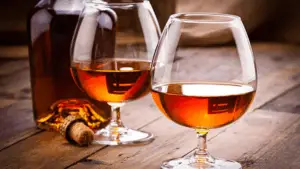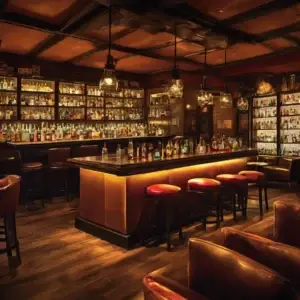Behind every memorable cocktail lies a structure of balance. Too much sweetness dulls the palate, too much acidity sharpens it, and too much alcohol overwhelms it. For more than a century, bartenders have recognized that the secret to a perfect cocktail often comes down to mathematics. The so-called Golden Ratio, a simple balance of spirit, sugar, and citrus, has guided bartenders since the earliest days of mixology, shaping the drinks we still enjoy today.
Origins in the 19th Century
The principle was first codified in the mid-19th century, as American bartenders began to organize recipes into categories. In 1862, Jerry Thomas, the legendary bartender of New York’s Occidental Hotel, published The Bartender’s Guide, the first book of its kind. His sours, punches, and cobblers all reflected a common structure: strong spirit, balanced with sweetener, and brightened with citrus. Though Thomas never used the term “Golden Ratio,” later bartenders would recognize this proportion as a foundation for balance.
The Formula in Practice
The classic formula is simple: two parts spirit, one part sour, and one part sweet. This 2:1:1 ratio forms the backbone of countless cocktails. The Whiskey Sour, first appearing in print in the 1860s, is a direct expression of the model. The Daiquiri, which rose to fame in Cuba at the turn of the 20th century, follows the same equation with rum, lime, and sugar. Even the Margarita, a Mexican classic traced back to the 1930s and 1940s, fits neatly into the framework with tequila, lime, and triple sec.
The genius of the formula lies in its universality. From American saloons to Caribbean resorts, the same ratio provided a map for balance. By standardizing structure, bartenders could improvise confidently, substituting ingredients while maintaining harmony. This consistency also trained drinkers’ palates, creating an expectation for what a “balanced” cocktail should taste like.
Adaptability and Innovation
What makes the Golden Ratio so powerful is its adaptability. Adjust the spirit, swap the citrus, or vary the sweetener, and a bartender can invent an endless number of balanced cocktails. The formula can be tightened for stronger, spirit-forward drinks or loosened for refreshing, low-alcohol serves. Its flexibility explains why the sour family of cocktails remains central to mixology, even as trends shift from one era to another.
The Golden Ratio also opened the door for regional variation. In Latin America, passionfruit and guava sometimes replace lime. In Japan, bartenders have experimented with yuzu and other citrus fruits. In Europe, honey, maple syrup, and fortified wines often find their way into the “sweet” component. Each interpretation builds on the same architecture, ensuring that even unfamiliar flavors arrive in the glass with a sense of balance.
Decline and Revival
By the late 20th century, the cocktail world had drifted far from the precision of ratio. Sugary concoctions like neon-colored daiquiris and oversized margaritas dominated bars, often bearing little resemblance to their carefully measured ancestors. The elegance of the 2:1:1 formula seemed forgotten.
Yet the craft cocktail renaissance of the early 2000s restored the focus on proportion. Influential bartenders such as Dale DeGroff in New York and Sasha Petraske at Milk & Honey revived the classics, reminding drinkers that balance was the true marker of quality. Their menus placed the sour family at the center, not because of nostalgia, but because the Golden Ratio provided a timeless foundation for creativity.
A Modern Teaching Tool
Today, the Golden Ratio is as much a teaching tool as it is a recipe. Bartending schools and cocktail workshops often begin with the 2:1:1 sour to train both palate and technique. Once mastered, students are encouraged to experiment, knowing that balance provides the safety net. Professional bartenders use the ratio as a point of departure, adjusting it slightly to highlight particular spirits or to cater to the preferences of individual guests.
The concept has also entered home bartending culture. For casual drinkers, the Golden Ratio is a practical rule of thumb that requires no advanced equipment, only an understanding of proportion. In this way, it democratizes cocktail making, allowing anyone to craft a drink that feels professional.
Enduring Relevance
Even in an age of molecular mixology, exotic infusions, and elaborate garnishes, the Golden Ratio remains relevant. It is proof that great cocktails are not solely about exotic ingredients but about harmony. The Whiskey Sour of the 1860s, the Daiquiri of the 1900s, and the Margaritas poured today in bars across the globe all carry the DNA of the same equation.
The Golden Ratio reminds us that cocktail making is both art and science. Behind the glamour of the glass lies a principle as old as mathematics itself: balance creates beauty. Whether in a 19th-century punch bowl or a 21st-century speakeasy, the same formula continues to shape how we taste, how we drink, and how we remember.


